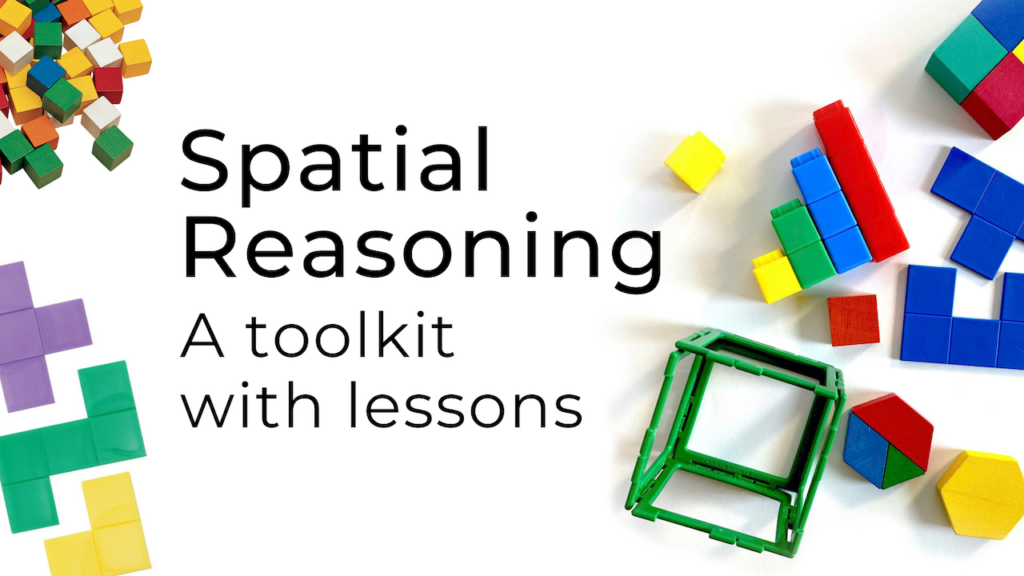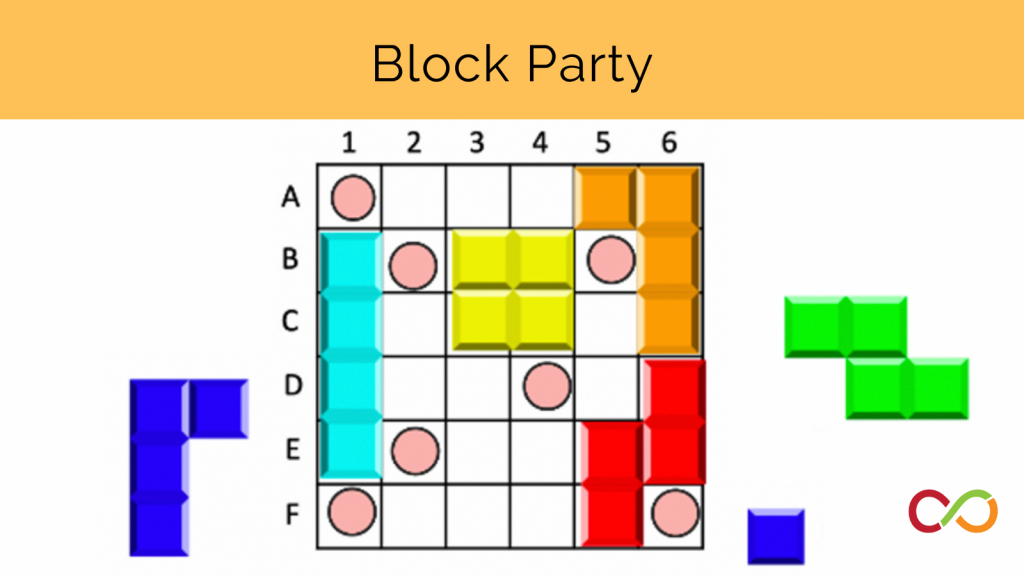Square Moves
Primary (Age 6 – 9)
Curriculum Goal
Primary: Geometry and Spatial Sense
- Give and follow multistep instructions involving movement from one location to another, including distances, half- and quarter-turns.
Context
- In person, students should have a clear view of the Challenge.
- Online, the teacher will share their screen in a virtual space; students will use Jamboard.
Materials
- Google Slide Deck with challenges and teacher prompts in presenter notes (Appendix A)
- In-class version: 10 square tiles per student (same colour)
- If possible, use magnetic tiles with a metal cookie sheet. This will be easier for students.
- Online version: Jamboard with the different challenges (Appendix B).
Lesson
- Provide students with square tiles or access to the Jamboard
- Inform students they will be playing a game that will challenge them to transform one shape into another by moving square tiles.
- Show Image 1A to the class and invite students to recreate it.
- If using Jamboard, students will see Image 1A already constructed.
- When everyone is ready, share Image 1B, alongside the Image 1A.
- Ask students to imagine how they could make the new shape by moving only one square on the original image.
- Before students make any moves on their own, invite students to use positional language to describe how they would make the transformation.
- Repeat with Image 2A and 2B, etc. As the challenge increases, so too does the number of moves required to complete the challenge.
- Have students find the minimum number of moves to transform Shape A to Shape B each time.
Look Fors
- Are students visualizing the moves in their mind? Are they gesturing while visualizing?
- What kind of positional language are students using?
Share this lesson
Share on facebook
Share on twitter
Share on email


